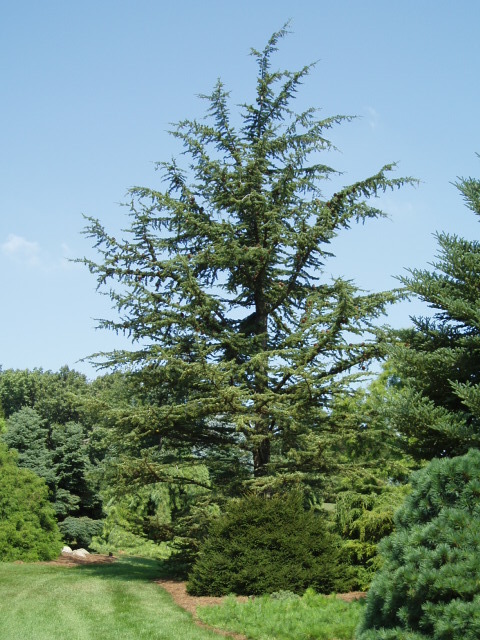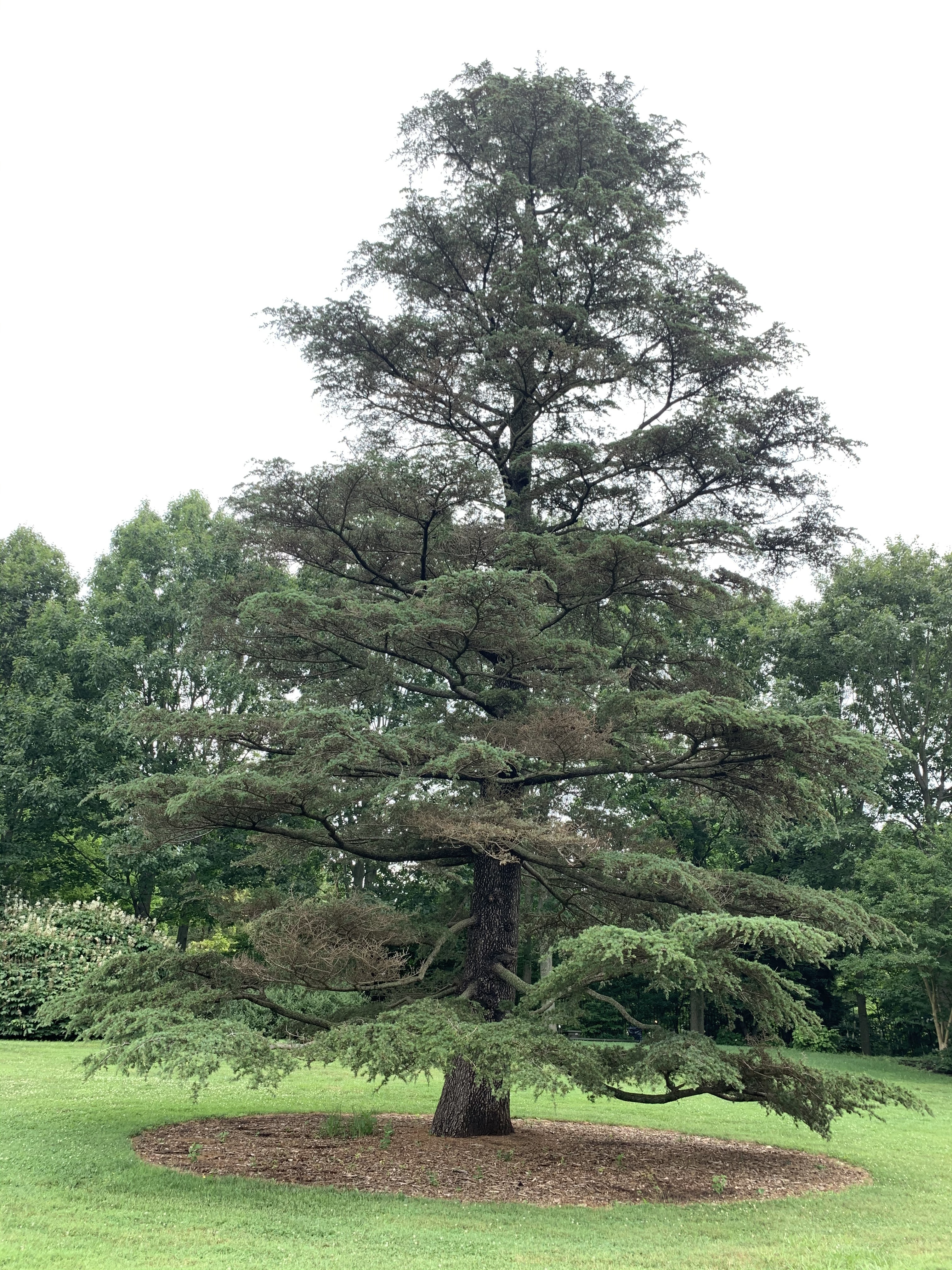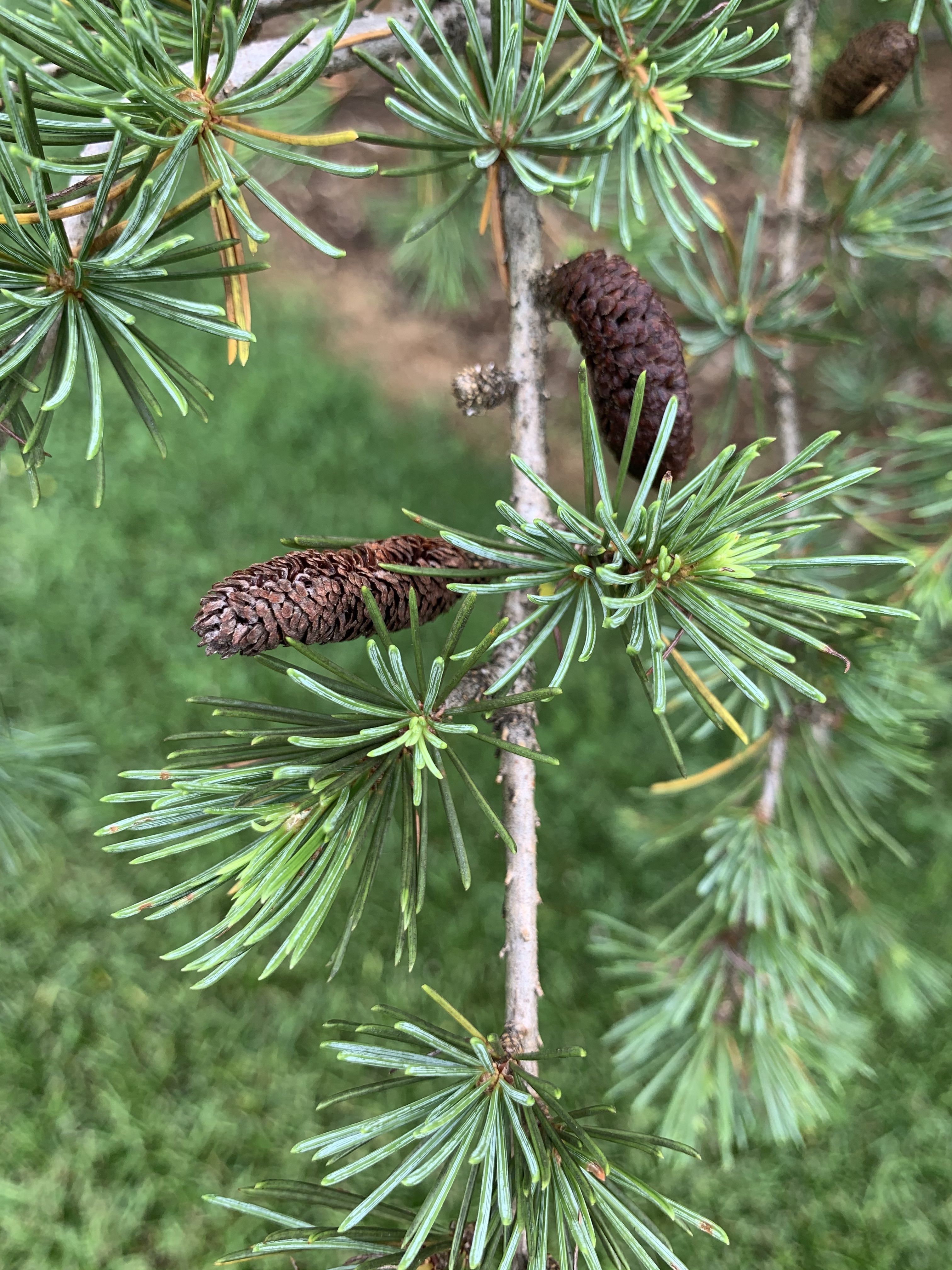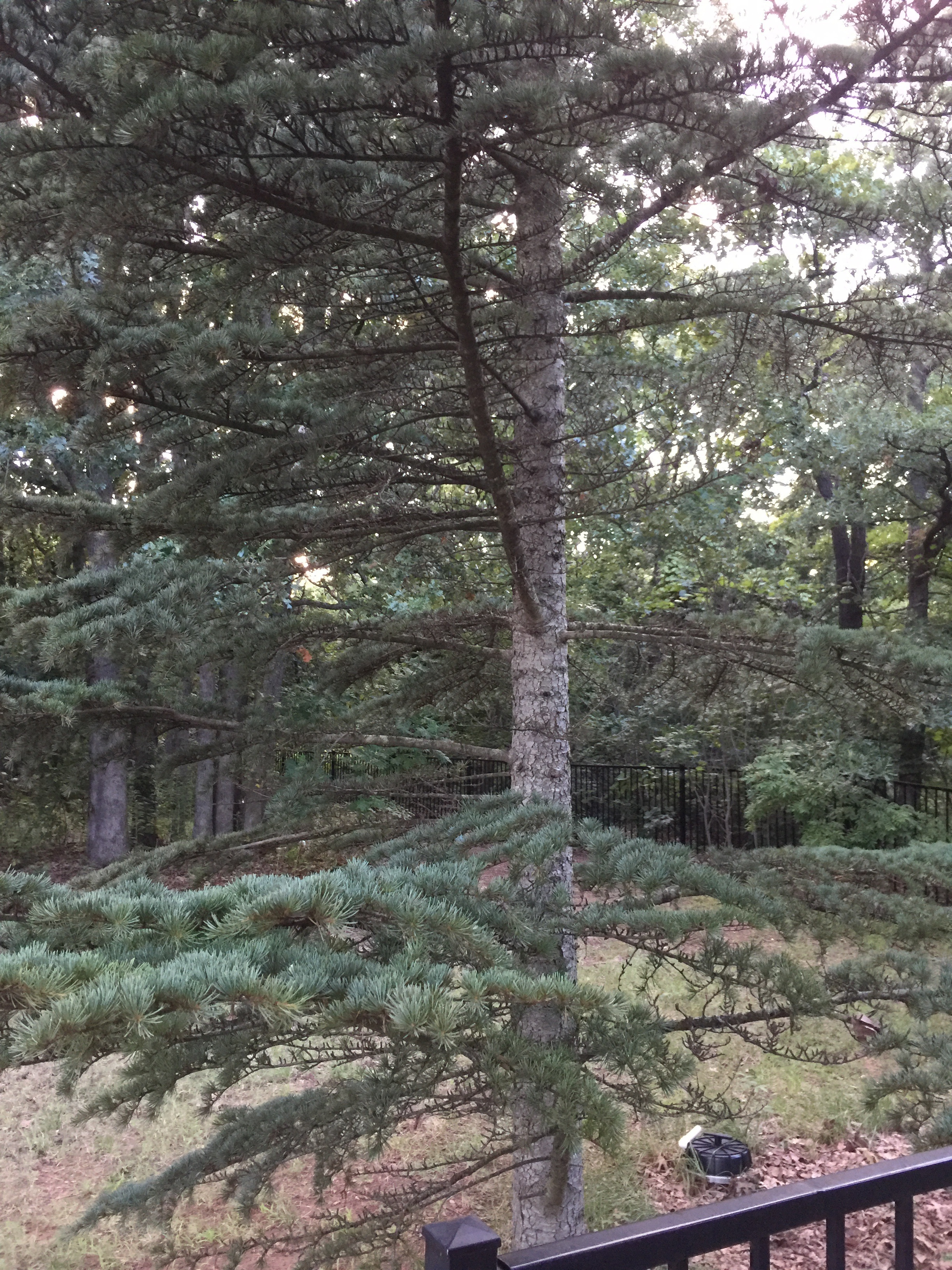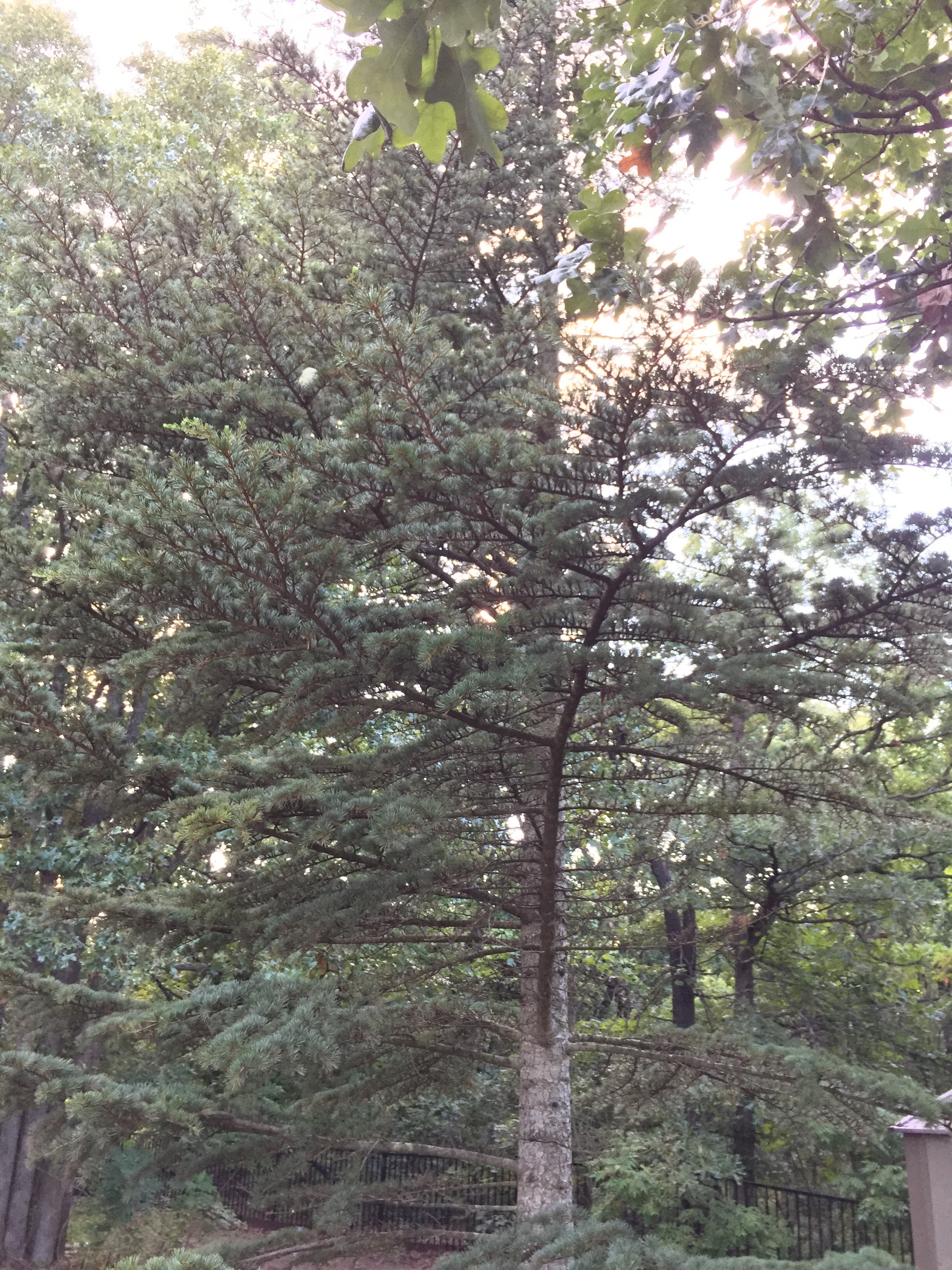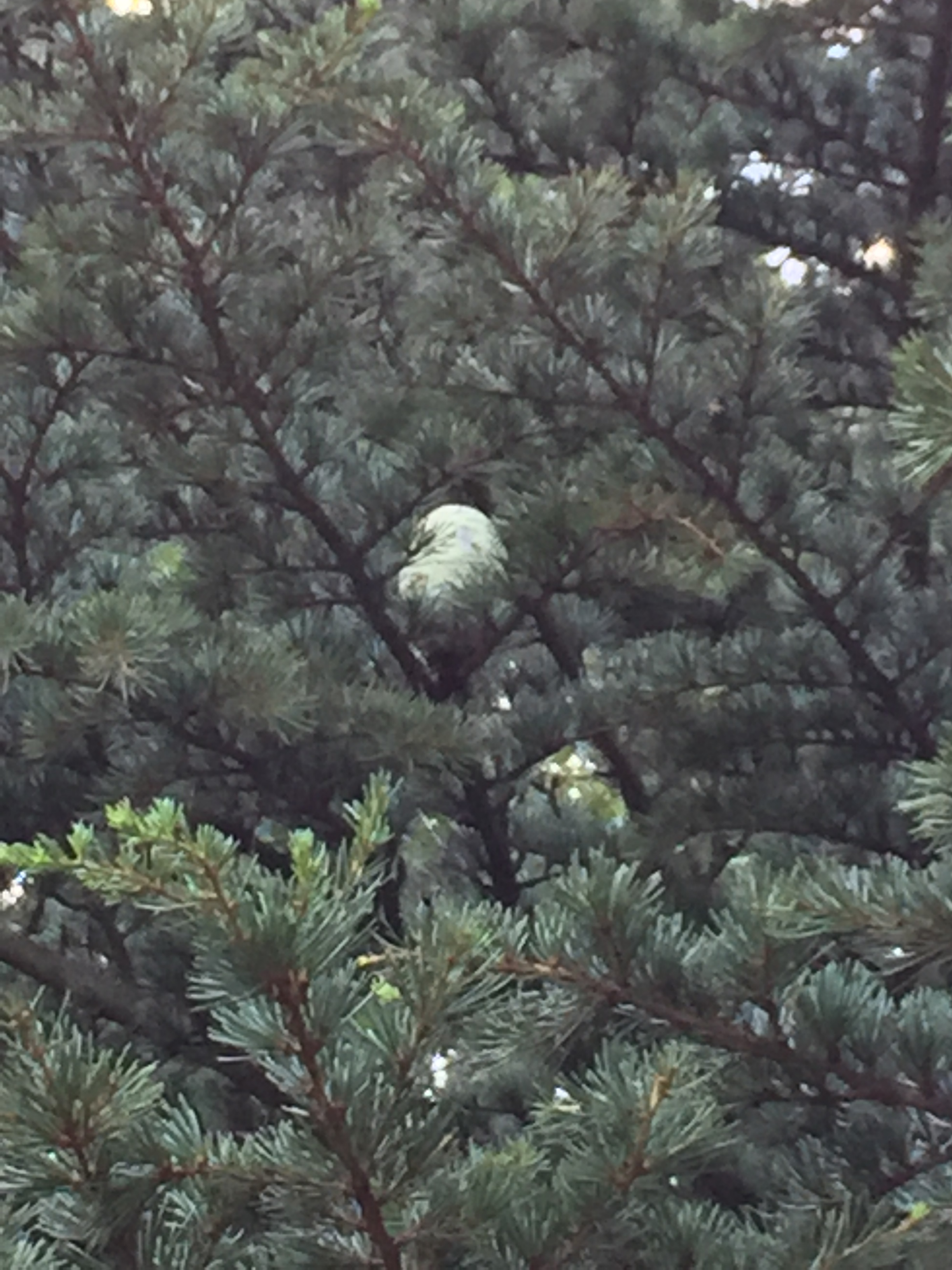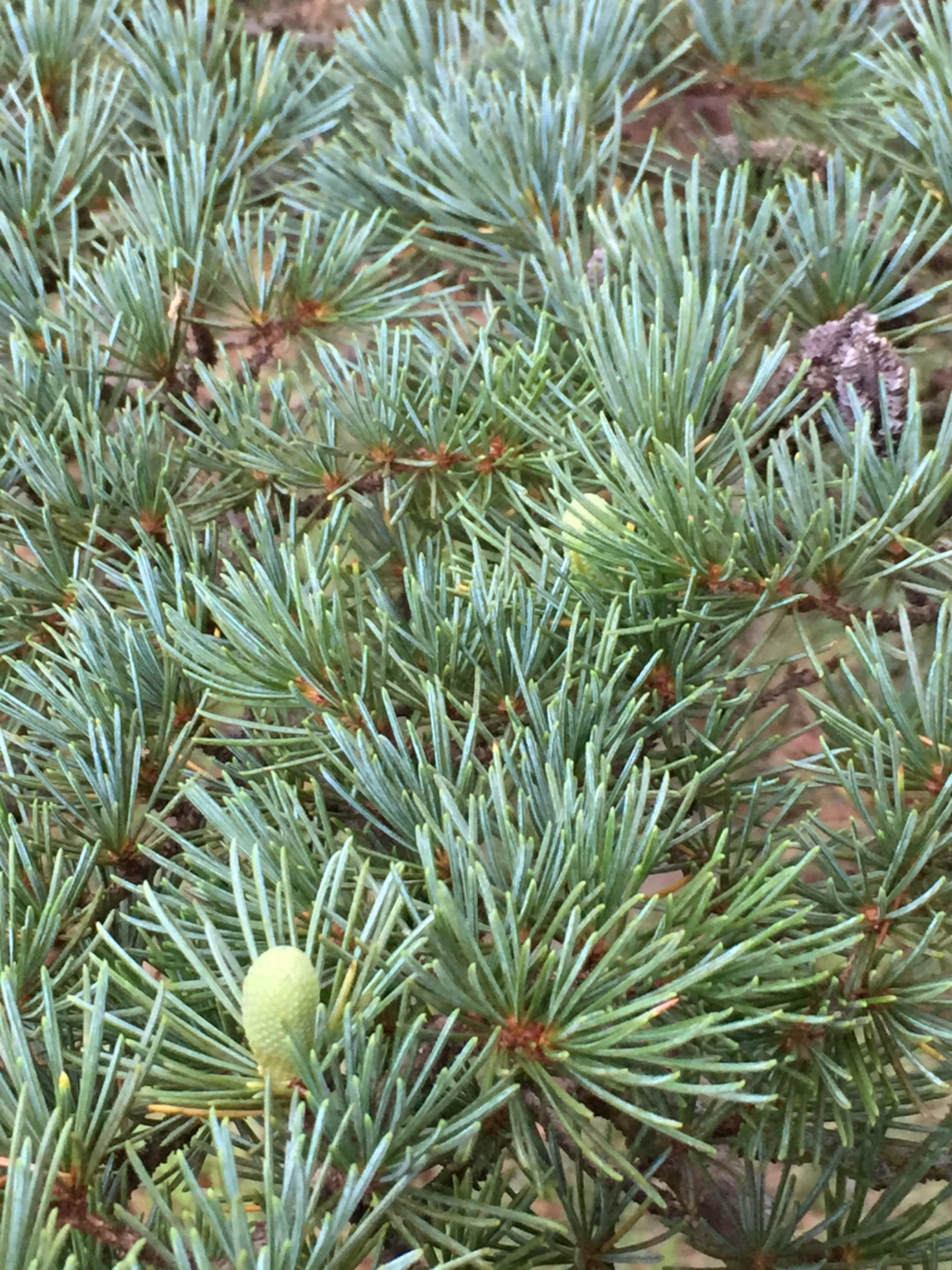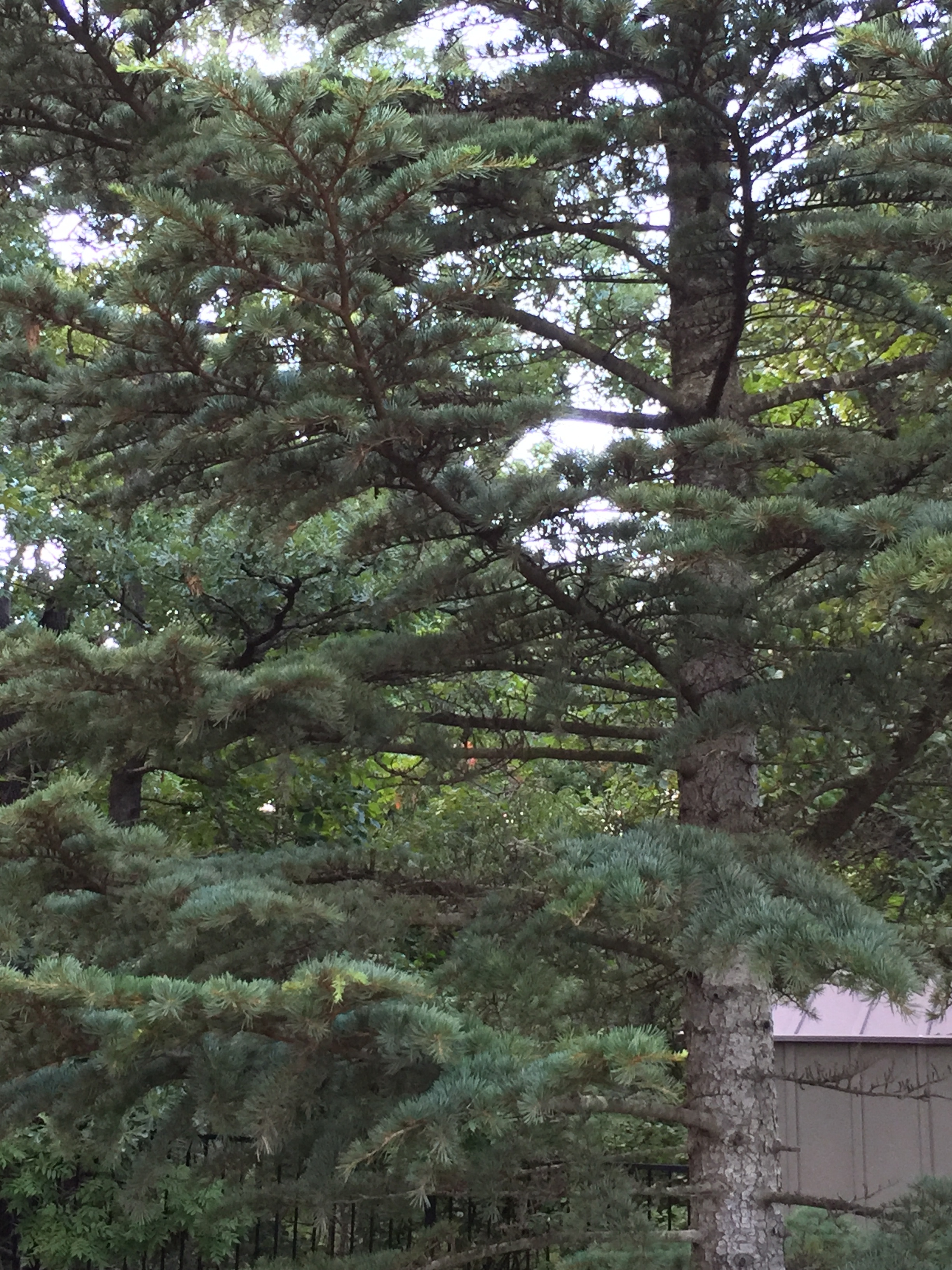Cedrus libani subsp. stenocoma as described in 1948 by Peter Hadland Davis (1918 - 1992), in Journal of the Royal Horticultural Society vol.74, no.113, is commonly known as Anatolian cedar.
Description. Anatolian cedar is a slender conical subspecies of Lebanon cedar that becomes narrowly columnar with age, differing from the typical subspecies that has a broadly spreading crown.
Foliage consists of silver-gray needles, and is purportedly more hardy than Cedrus libani subsp. libani.
Distribution. This subspecies is native to Turkey, primarily in the Cicilian Taurus Mountains. Outlying populations are also known to exist in northern Turkey.
